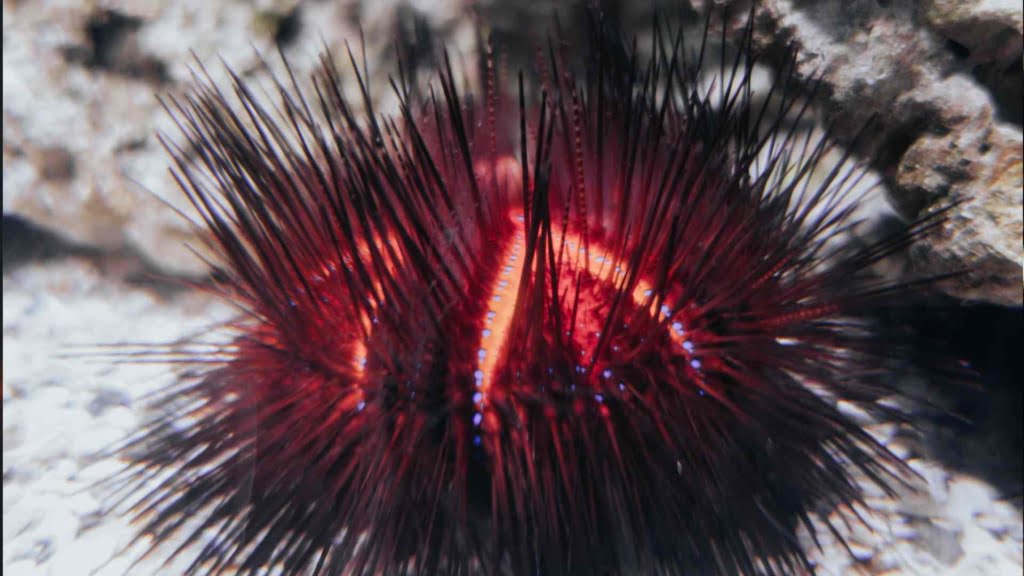
Key Takeaways
| Fact | Description |
| Scientific Name | Astropyga Radiata |
| Common Names | Red urchin, fire urchin, false fire urchin, blue-spotted urchin |
| Family | Diadematidae |
| Size | Up to 20 cm in diameter |
| Habitat | Tropical Indo-Pacific region |
Introduction
The fire urchin, scientifically known as Astropyga radiata, is a captivating species of sea urchin that belongs to the family Diadematidae. This large species has long spines and vibrant colors. The German scientist Nathaniel Gottfried Leske first talked about this in 1778.
Description
The fire urchin is a pretty big creature, with a width that can reach up to 20 cm (that’s about 8 inches!). The top side of its body is either flat or slightly concave. Its spines, which are arranged in five vertical groups, can grow up to 4 cm (or 1.6 inches) long. Between these groups of spines, there are areas shaped like a “V” where there are no spines at all. These areas match up with the parts of the urchin’s body known as the interambulacral plates.
The color of the test and spines varies from reddish-brown to purple, dark brown, or nearly black. These bare areas are red with lines of iridescent blue dots. The spines are long and hollow; they are of two kinds, the shorter being venomous.
Venom
Fire urchins have venomous spines. The venom in these constantly waving spines serves as their primary defense mechanism. At the bases of these spines are tiny venom-filled pincers. So, if you get pricked by one of these spines, there is more poison to endure.
Distribution and Habitat
You can find the fire urchin in the tropical Indo-Pacific region, ranging from the African coast to Hawaii and Australian waters. It thrives in various marine environments, contributing to its wide distribution. The fire urchin prefers rocky substrates and coral reefs where it can find plenty of food and hide from predators. You can find it at depths ranging from shallow waters from 10 to 30 metres (33 to 98 ft), to deeper parts of the ocean about 70 metres (230 ft).
Diet
Fire urchins mostly eat plants, and they really love algae. They use their special tube feet and spines to scrape off the algae from where it’s growing, whether that’s on rocks or on corals.
Reproduction
Fire urchins have a fascinating life cycle. It all starts when they release their eggs and sperm into the water. Once the eggs are fertilized, they turn into tiny larvae that float around in the water. These larvae go through several changes before they settle down on the ocean floor and transform into young urchins. Every stage of this process, from the release of the eggs and sperm to the growth of the adult urchins.
Predators
Despite their venomous defense mechanism, fire urchins have several predators. Certain types of fish, such as triggerfish, pufferfish, and some wrasses, eat fire urchins.
Conservation Status
There are no specific conservation concerns regarding fire urchins at this time.
Conclusion
The fire urchin is a fascinating creature that adds color and intrigue to the underwater world. Its unique characteristics and adaptations make it a subject of interest for marine biologists and underwater enthusiasts alike. As we continue to explore and understand these remarkable creatures, we gain a deeper appreciation for the biodiversity and complexity of life beneath the waves.
Remember, you should observe these beautiful creatures from a safe distance because of their venomous spines. Always respect marine life and their habitats.
References
